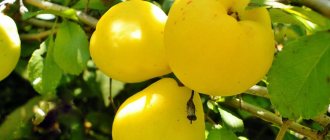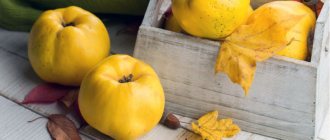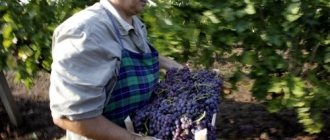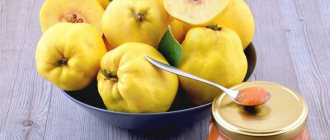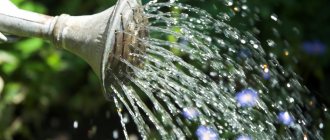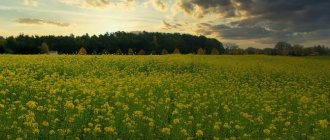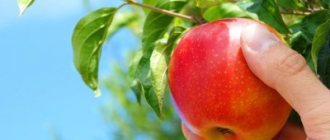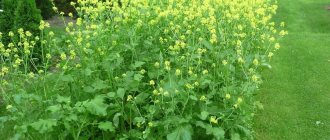September 19, 2019
The common quince is loved by all summer residents for its beautiful large dark pink flowers and high yield, which is why it is often found in home gardening. Despite the fact that the tree is heat-loving and grows in southern regions with temperate climates, gardeners have learned to successfully grow it in other regions. The main thing is to approach each stage of planting and care correctly. Before planting quince, it is recommended to familiarize yourself with all stages of site preparation.
What is quince
Quince is a fruit crop of woody plants of the Rosaceae family. The Common Quince species is the only representative of this genus. The tree can reach a height of 5 m.
Where does quince grow? The tree's birthplace is considered to be mountainous Armenia, from which it came to Asia Minor, then to Ancient Greece and Rome. In nature, the area of distribution of the fruit crop covered the Caucasus, Transcaucasia and Turkmenistan. Currently, the quince tree is successfully grown in the south of the country and in the Moscow region.
Quince grows in forests along the edges, in clearings and clearings, on dry soil. It can grow for a long time with a lack of moisture and without irrigation. It also tolerates excessive moisture; for example, in the Astrakhan region, quince, compared to other fruit trees, tolerates floods better.
Quince, which grows on heavy loam, bears fruit best. The fruits of cultivated trees reach several kg, and those of wild trees - no more than 100 g.
Reproduction occurs by seeds, cuttings, root shoots and grafting.
Quince harvest
The quince harvest, as a rule, occurs in October-November; in late autumn, the harvest time may be pushed back even further. However, when frost approaches, it is better not to wait for the quince to fully ripen and start collecting it already when the first fruits fall to the ground.
It is better to collect quince in dry weather and in the morning, after the dew has evaporated.
The collected fruits are stored in a dark room, wrapped in foil or paper at a temperature no higher than 4°C and air humidity no more than 80% - under such conditions, quince will be stored for about two months.
Beneficial properties of quince fruits
The pulp of quince fruits contains copper, selenium, magnesium, fiber, vitamins B, A, C and K. Thanks to this composition, the fruits have the following beneficial properties:
- anti-inflammatory - the presence of ascorbic acid in the composition helps improve immunity;
- dietary - the low calorie content of the product makes it an indispensable fruit for people who watch their diet;
- antioxidant - polyphenols present in fruits slow down the aging process of the body and prevent the development of heart attacks;
- antitumor - tannins included in the composition reduce the risk of developing cancer;
- expectorant - a decoction of quince leaves helps to cope with cough;
- stimulating intestinal activity - the fiber and pectins included in the composition stabilize the functioning of the digestive organs.
Fruit and organic acids present in the fruits are used in cosmetology to prepare anti-acne masks and to eliminate fatigue.
Quince diseases
Most often, quince is affected by fruit rot, or moniliosis, powdery mildew, rust, rotting of the ovaries, brownishness of the leaves and gray rot of the fruit.
Moniliosis is a fungal disease that spreads in temperate zones in damp and humid spring, as well as in the first half of summer. First, the disease affects fruits that have mechanical damage: brown spots form on them, quickly increasing in size, their flesh becomes loose, loses its taste, as a result, the fruits fall off, but some of them turn blue, harden, but remain on the branches.
Control measures. Against fruit rot, quince is treated with Abiga Peak, Bordeaux mixture, copper sulfate, Rovral, Teldor and other fungicides of similar action.
The brownishness of the leaves is manifested by many brown round spots on the leaves of quince. As the disease progresses, the leaves dry out and fall off prematurely.
Control measures. After flowering, treat the quince with a one percent solution of Bordeaux mixture. Collect and burn fallen leaves.
Powdery mildew appears at the ends of annual young shoots as a whitish or reddish coating, which, with the development of the disease, turns into a dense brown film with black dots - the fruiting bodies of the fungus. The shoots stop developing, the leaves become deformed, the ovaries crumble, and the quince dries out at the growing points.
Control measures. Immediately after flowering, the quince is treated with fungicides; after two to three weeks, spraying is repeated.
Rust – The symptoms of this fungal disease appear as orange-brown bumps on the upper side of quince leaves, and oval or round pustules form on the underside. Over time, the spots turn into stripes, the leaves turn yellow and fall off prematurely.
Control measures. Treatment of quince from rust involves treating the tree twice with fungicides after the leaves bloom, with an interval of 2 weeks.
Rotting of the ovaries - this disease is also of a fungal nature: first, dark spots appear on the leaves, gradually spreading throughout the entire leaf, and during flowering, pathogenic spores penetrate the buds and flowers, destroying the ovaries.
Control measures. As a preventive measure, sanitary pruning of diseased and broken branches, as well as the destruction of dry fruits, is considered. Good results are obtained by treating quince with a solution of Fundazol during flowering and immediately after it.
Gray rot manifests itself as necrosis - rapidly increasing brown spots on shoots and leaves. During periods of high humidity, the affected areas become covered with a fluffy coating. The causative agent of the disease is omnivorous and easily moves from one plant to another.
Control measures. Treatment of quince with Kuproksat, Oksikhom, Champion, or Topaz is effective in combating the disease.
In order to prevent quince disease, it is enough just to follow the agricultural practices of the crop:
- – keep the soil under the crown clean;
- – after harvesting, carry out preventive treatment of trees with a solution of Bordeaux mixture or copper sulfate;
- – in early spring, using preventive treatment with the same copper-containing preparations, destroy pathogenic microorganisms that have overwintered in the soil around the tree trunk or in the bark of trees.
Quince planting rules
In order for quince to please you with high productivity, you should take care of its proper planting, cultivation and care. We recommend that you plant quince in the central part of your garden plot, which is reliably protected from the wind.
The fruit crop takes root well in soils where groundwater approaches the surface one meter.
When planting, consider the following factors:
- prepare the seat in early March or September, it should be 40 cm deep and 80 cm wide;
- pour some clay into the bottom of the hole;
- pour fertilizer into the hole a few days before planting.
For fertilizer, use a composition of 50 g of ash, 150 g of superphosphates, a small amount of lime and soil.
You must also adhere to the following rules:
- choose an area for planting that is well lit by the sun, and there are other fruit trees nearby;
- Cultivate the fruit crop in a climate in which the average daily temperature per year is no more than 9 degrees;
- Water the tree 4-5 times per season.
Watering young cuttings is carried out on days 2–3, adult shrubs - before flowering. The second watering should be carried out during the formation of flowers, the third - during the formation of ovaries. Carry out the fourth watering when the shoots grow, the fifth during the growth and formation of fruits.
Top dressing
The first feeding from a mineral-organic composition will be enough for a year. Organic matter should be applied once every 2 years, mineral fertilizing should be done at the beginning of autumn, spring and summer:
- fertilizing with nitrogen is poured near the ground in early spring;
- as soon as the quince fades, the soil should be watered with a mixture of 0.2 kg of potassium-phosphorus fertilizers diluted in 10 liters of water;
- Apply fertilizers based on phosphorus and potassium in early August.
Carry out mulching with compost and peat in spring or autumn, spreading the composition in a layer of up to 5 cm.
Propagation of common quince
The plant is propagated vegetatively - by grafting, layering, root shoots and cuttings, as well as sowing seeds.
Root growth is the easiest way
The easiest way to get a new tree from an adult ungrafted specimen is to plant root suckers.
In the spring, when digging up the space around the trunk, the root system of the young plant is cut off from the maternal roots and planted in a new place.
It is important to have time to plant it before the moment when a green cone appears on the buds.
Sowing seeds
If it is not possible to purchase seedlings of quince fruit trees, they can be grown from the largest and well-ripened seeds.
At the beginning of February they are placed in the refrigerator for stratification.
To do this, wet sand in a volume approximately 3 times the volume of seeds, mixed with planting material, is poured into a plastic bag with small holes for air to enter.
After 2-2.5 months, stratified seeds are sown in a greenhouse in loose, fertile soil with a pH level of no more than 6-7.
By autumn, the seedlings grow to 40-50 cm, and in the spring they can already be transplanted to a permanent place of cultivation, and the planting depth is maintained the same as during the first year of life.
Propagation by cuttings
Cuttings are cut in the fall from young shoots of the current year and stored in damp sawdust in a cool room until spring.
With the arrival of March, they are planted in a cold greenhouse for rooting.
To do this, prepare a soil mixture of fertile soil and sand, bury cuttings into it, pre-treated with a root formation stimulator, and maintain constant soil moisture.
Rooted seedlings are transplanted to a permanent place no earlier than the spring of the next growing season.
By layering
Young strong shoots located low above the ground are used as layering.
To do this, in the spring or autumn, tilt the branch towards the soil, secure it with a metal or wire bracket and sprinkle it with earth. Moisturize periodically.
Both spring and autumn cuttings are planted at the beginning of the next growing season.
A young seedling rooted in the spring can be planted in the fall, but there is a high risk that the young plant will not have time to take root and will die in the winter.
How to graft common quince
Cultivated varieties are usually propagated by grafting.
Seedlings of hawthorn, rowan or quince itself are used as a rootstock.
You can graft pear or apple trees onto common quince.
A cutting or bud of a varietal tree is grafted into a split or obliquely at the level of the root collar or 10-15 cm higher, however, seedlings grafted at a height of 1 m are more frost-resistant.
Methods of grafting onto one trunk several varieties of quince, differing in the time of fruit ripening, are considered effective, that is, scions of early-ripening, late-ripening and winter varieties grow in two on one trunk.
Common quince is grafted in early spring, when the buds begin to emerge. Usually after a week it is already possible to draw a conclusion whether the vaccination was successful or not.
Features of planting in spring and autumn
When planting a fruit crop, keep in mind that quince is heat-loving and can easily tolerate drought. Plant the tree on the south side of the site or in its center. It is best to plant a tree when it is dormant.
Recommendations for planting in autumn
For planting, purchase 1-year-old seedlings with an open root system. Quince should be planted at a distance of at least 5 m from another tree.
This is how a tree is planted:
- The previously prepared planting site and into which fertilizer was applied a few days before planting must be watered.
- Place a wooden support in the middle of the hole.
- Place the seedling in the hole and straighten its roots.
- Fill the planting site with soil, compact the soil well and water it with water.
After complete absorption of water, tie the seedling to a wooden support and mulch with humus.
Planting in spring
If you plan to plant quince in the spring, then dig a planting hole in the fall, add fertilizer to it and water it. Mulch the root circle in a layer that is 5 cm smaller than the previous one.
Quince begins to bear fruit 3–4 years after planting. To get a good harvest, it is necessary to carry out certain care measures.
How to plant quince on your plot so that it bears fruit
Quince can grow as either a shrub or a small tree, depending on the variety. Also, the overall appearance may depend on the pruning of branches at the very initial stage of its development. The growth of an adult plant reaches up to 3-4 meters. In the wild, in open, sunny areas, quince grows as a tree. In Japan and China, quince is most often found growing as a bush, so this species is called Japanese quince or Chaenomeles. On their plots, summer residents plant the fruitful common quince, which annually pleases the owners with its juicy, abundant fruits. But in order for it to actively bear fruit, proper care of the quince is necessary - watering, fertilizing and other manipulations.
Landing place
Before planting quince seedlings, you need to select the most favorable site. As you know, quince is a light-loving plant, so the planting site should be located on the southern sunny side. If planting quince will be carried out by planting a seedling in the ground, it is recommended to prepare the site in the fall, since the plant is planted in late spring, when night frosts are excluded. The young seedling is very afraid of exposure to negative temperatures and may die.
The main stages of preparing a site for planting:
— prepare the soil by adding fertilizer and minerals to the soil;
- dig the contents in with soil and water;
- leave the soil in this state for several days;
- after this, prepare a hole about 40 cm deep;
— it is recommended to place a small layer of clay, wood ash and superphosphate (150 g) on the bottom;
— direct planting of seedlings in open ground;
— after planting, it is better to compact the soil to avoid air voids between the roots;
- water the seedling.
The root system of an adult tree develops in width; the roots do not grow deeper than a meter, but their diameter is several times greater than the diameter of the crown, so when preparing the site, you must always take this fact into account and not plant other plants nearby. For example, a tree with a crown about 2 meters in diameter can grow roots up to 8 meters in diameter.
How to care for quince
In order for a tree to bear fruit abundantly, it is necessary to provide favorable conditions for growing the crop, that is, water it in a timely manner, apply the necessary fertilizers and sometimes loosen the soil. It should be remembered that quince grows on almost any soil and tolerates dry and rainy periods equally easily. A well-developed tree bears fruit for 50-60 years, producing 40-70 kg of fruit annually.
Quince requires a lot of light and free space around itself, so there should not be large branchy trees or various buildings nearby that block the sun's rays. It is very good if there is some kind of protection on the north side, for example, a slope or a building, but no closer than 6 meters. Such a shield will protect the plant from cold northern winds in winter.
Note that an adult plant can easily tolerate drought.
, but young seedlings need to be watered regularly. During the growing season, an adult quince is watered 3 times:
• before flowering begins;
• at the beginning of summer, for better development of the tree;
• at the end of summer, for better fruiting.
One tree will need 15-20 buckets of water to properly moisten the tree trunk. Before watering, you need to loosen the soil to a depth of 10 cm, and then mulch with a thick layer of mowed grass (up to 25 cm) to retain moisture.
Quince responds well to feeding. Fertilizers should be applied after watering so as not to burn the roots.
in spring
When loosening, we add nitrogen fertilizers to the tree trunk circle - 30 g per 1 sq. m.
In summer
the plant can be fed with organic fertilizers, an aqueous infusion of chicken droppings or slurry.
in autumn
we feed with potassium and phosphorus fertilizers, you need to add 20 g per 1 sq. and dig the soil to a depth of 10 cm.
Before the onset of winter
Water-recharging irrigation should be carried out using at least 40 buckets of water. The quince root system is located close to the soil surface, so there is a risk that it may be damaged by frost.
If you have harsher winters in your area, you should wrap the quince in non-woven material (spunbond, lutrasil) and tie it with spruce branches.
To make the quince have an attractive appearance
and the presence of juicy healthy fruits, it is necessary to adhere to proper care, namely:
• Trimming
– carried out in the first 5 years in the stage of active development of the branched part. It is recommended to prune branches in early spring, when buds have not yet set on the tree.
• Garter
– due to the characteristics of the tree’s development and its ability to bear a lot of fruit, the tree needs a special support that will support the branches and protect them from sagging.
• Treatment
– before the fruit appears, the tree can be treated with special products against aphids, moths and leaf rollers. Just do not overuse chemical solutions - treatment is carried out selectively and only as needed.
• Top dressing
— from early spring to late autumn, quince needs specialized nitrogen and phosphorus-potassium nutrition. In winter, it is better to apply mineral-organic fertilizers.
• Harvesting
– in order for the fruits to gain juiciness, sweetness and acquire their characteristic taste, it is better to leave them on the tree until fully ripe.
Good to know: Quince is an excellent honey plant, so even from 1 hectare of quince orchard, bees can collect up to 18-20 kg of honey.
Purchasing a seedling
It is important not only to plant the seedling correctly, but also to purchase healthy planting material. A one-year-old seedling with a well-developed root system is best suited for planting. Its important property is its excellent survivability in a new environment. Therefore, if you approach the issue wisely, planting quince is not so difficult.
The best varieties of quince can be purchased in the AgroMarket24 online store by clicking on the link, where different varieties are presented. You can also additionally order mineral fertilizers that are suitable for fruit and berry crops. Expedited order delivery time will allow you to keep the seedlings in excellent condition.
Keywords: Gardening Agricultural technology
Quince care
Proper care of quince includes timely removal of weeds near the tree, as they harm the root system, as well as pruning, which is carried out as follows:
- The bush should not be too thick. One branch can have 10–15 branches, 2 branches of which must be up to 5 years old, no more than four 3- and 2-year-old branches, all the rest must be 1-year-old.
- It is necessary to cut off branches older than 5 years, as they produce the smallest yield.
- Pinch vertical shoots before budding.
In spring, remove branches that touch the ground.
The best neighbors with quince will be apple and pear trees, since the tree needs cross-pollination.
How to properly collect and store fruits
With proper care, Japanese quince bears fruit regularly. The harvest is harvested according to several general rules:
- No special equipment is needed for this. When chaenomeles ripens, the fruits are removed from the branches exclusively by hand, along with the stalk, and carefully placed in a bucket or other container. Shaking them off the tree or throwing them on the ground is a bad idea.
- You can't pick fruit if it's raining. And you need to wait for the dew to dry.
- During the process, the harvest is sorted, rejecting specimens with mechanical damage, traces of disease, and pests. You can immediately throw away small fruits - they are most often very sour and dry (they do not ripen during storage and the taste does not improve).
- If you are prone to allergies, it is recommended to use personal protective equipment for the eyes, mouth and nose when going to harvest. Even when chaenomeles is fully ripe, a “lint” remains on the skin, which can irritate the mucous membrane.
The pulp of even ripe Chaenomeles remains hard, but this does not mean that the fruit is not susceptible to mechanical damage.
Important! If the quince had to be collected unripe, you can put it in the same bag with apples, pears or bananas. These fruits actively emit ethylene, chaenomeles will ripen faster, but during long-term storage such “neighborhood”, on the contrary, is harmful.
When fresh, chaenomeles lasts quite a long time. The fruits ripen, maintaining the density, even the hardness of the pulp. But we need to provide them with optimal or close to optimal conditions:
- temperature 6-10 °C;
- air humidity 80-90%;
- lack of light;
- good ventilation in the room.
In such conditions, especially if you wrap each fruit in paper or “isolate” them from each other in cardboard boxes, wooden boxes, sprinkled with sawdust, sand, wood shavings, scraps of newsprint, straw, Japanese quince will last 4-6 months. Chaenomeles are stored in the same way as apples and pears.
You can also treat Japanese quince fruits with wax or lubricate them with any vegetable oil before storing them. But then you will have to wash them very thoroughly before eating them.
In the refrigerator, if you put fruits in plastic bags or wrap them in cling film, they will last half as long (2.5-3 months). At room temperature, Japanese quince is stored for a maximum of 2-3 days - if you leave the fruit indoors, the tree, one might say, bears fruit in vain.
Important! The Japanese quince harvest in the storage area is inspected at least once a month, getting rid of specimens that have begun to rot.
Japanese quince is stored frozen for the longest time (about a year). To do this, wash the fruits thoroughly, peel them, and remove the seeds. The pulp is cut into slices or cubes, placed in small portions in zip-lock bags with airtight fasteners and put in the freezer.
The best varieties of quince
It's time to decide on the best quince varieties that should be on your site! Here they are:
- Ellie Mossel is a hybrid variety of quince, which is a shrub up to 150 cm high. It grows quickly and lives for a long time. It begins to bloom in May simultaneously with the leaves blooming. The fruits ripen in October. Ellie Mossel is drought-resistant, tolerates cold well, and is ideal for growing in the Moscow region.
- Golden quince is a variety of medium-sized tree, the fruits of which reach 0.3 kg. The fruits ripen in the 3rd decade of September and are stored for 1–1.5 months. Golden quince has good transportability. The tree begins to bear fruit in 4–5 years, the yield is high. It survives winter and frost well and is suitable for growing in the Moscow region. Disadvantages include average drought resistance and a high probability of subcutaneous spot.
- Quince Rumo is a medium-sized tree variety that was bred by crossing the Akhmed Zhum and Krasnodar large varieties. The weight of one fruit is about 0.35 kg. The fruits ripen in the 3rd decade of September and are stored for 2–3 months. Ruma begins to bear fruit 3–4 years after planting. Good frost resistance, so this variety is suitable for growing in the Moscow region. Ruma is resistant to fungal diseases.
You can purchase these quince varieties in our store! Place your order today to enjoy healthy and delicious quince fruits very soon!
When and in what month should you collect Japanese quince fruits?
It is impossible to indicate a specific harvest time for Japanese quince. Every year, fruits are harvested, taking into account the varietal characteristics of the plant, climatic conditions in a particular region and the weather in spring and summer.
If the tree bears fruit not for the first time, you can determine that it is time to pick the “apples”, focusing on their appearance:
- there is practically no “hairy” coating left on them (the ovaries are covered with it very thickly; while the fruits ripen, it gradually thins out);
- the skin has completely changed color to yellow (sometimes, even if chaenomeles ripens, “spotty” green spots remain on it), the fruits emit a light aroma;
- if you press on the fruit, the pulp slightly moves under your fingers, and the characteristic “woodiness” disappears.
When chaenomeles ripens, individual fruits fall to the ground: this is another sign that it is time to harvest
Important! If the tree bears fruit and frost is predicted in a few days, the fruit is collected, even though it clearly still needs to ripen. Frozen chaenomeles does not store well, but at the same time it becomes tastier.
When does quince ripen in Russia?
In their homeland, most Chaenomeles varieties bear fruit at approximately the same time. But in Russia the harvest does not ripen at the same time. This is due to significant climatic differences in the regions:
- In central Russia, the approximate ripening period for Japanese quince fruits is the second half of September. If the end of summer and beginning of autumn are warm enough - in the first ten days of October.
- In the southern regions, chaenomeles bears fruit later. The harvest is harvested in the last ten days of October. You can delay this until the end of the first ten days of November. Even if the fruits on Japanese quince ripen completely, most of them do not fall off and remain securely on the branches.
- In the Urals, Siberia, and the Far East, exclusively cold-resistant varieties are cultivated. They bear fruit early, the fruits are harvested already in the first half of September.
Japanese quince, which still needs to ripen, is very sour and astringent in the mouth
Important! When choosing chaenomeles, you need to take into account not only its decorative properties, but also when it bears fruit. In late-ripening varieties in regions with harsh climates, the “apples” simply do not have time to ripen.
Where can I buy
You can buy quince seedlings with delivery by Russian Post in our online store Peasant Farm Fruit Garden.
We offer high-quality seedlings at affordable prices with a high survival rate and excellent yield! Our quince seedlings are suitable for growing in Krasnodar and the Moscow region, as well as other regions of the country. We guarantee fast dispatch and secure packaging.
We want to please you! Therefore, we provide free advice on how to properly grow and care for quince, what feeding it needs and when.
By ordering seedlings by mail in our online seedling store Peasant Farm Fruit Garden, you can be sure that you will receive quince seedlings at the most attractive price and in excellent condition! If you are interested in other quince varieties, please contact us!
Previous:
- Apricot - planting and care, the best varieties
- Roses - planting, care and best varieties
- Raspberries - planting and care, the best varieties
- Gooseberries - planting, care and varieties
- Hawthorn shrub - planting, care and types
Quince pruning
When to prune a quince.
The main pruning of quince is carried out in early spring, before the sap begins to flow. Dry and disease-affected branches are cut out and burned, thinning and rejuvenating pruning is carried out on old trees, and trees up to five years old are subjected to formative pruning. In the summer, in August, the ends of the rapidly growing quince shoots are pinched. Quince in the fall, after leaf fall, when the trees enter the dormant period, only needs sanitary and thinning pruning.
How to prune quince.
The crown of a tall quince is formed like a bowl with an open center, from 4-5 skeletal branches located at a distance of 15-20 cm from one another, and in low-growing varieties they form a sparse-tiered crown of 8-10 branches, on which lateral branches are evenly placed . The height of the trunk of a quince tree should not be large - only 40-50 cm, otherwise pruning a quince is very similar to pruning an apple tree.
Pruning quince in spring.
The first pruning of a spring seedling is carried out immediately after planting, and if you planted a quince in the fall, cut it next spring to a height of 50-60 cm, leaving 7-8 buds, from which the lower tier will be formed - four or five branches growing at a distance of 10- 15 cm from each other, and the next, second tier of branches, located 30-40 cm higher. A year later, next spring, the conductor (the central branch of the quince) is cut at a height of 20-30 cm from the level of the skeletal branches to the outer bud, and the annual growths on the lower tier are shortened to 50-60 cm, thereby forming second-order branches. Do not cut off side branches, except those that thicken the center of the crown or those that compete with the conductor. Remove all root shoots. By the beginning of fruiting, that is, by 3-4 years, the crown is usually already formed.
Pruning quince in autumn.
From the fifth year of growth, quince only needs to maintain the shape of the crown - it is better to continue to do this in the spring. And in the fall, after the leaves fall off the quince, it is subjected to sanitary pruning - diseased branches that dry out and are broken during fruiting or harvesting are removed, as well as those that thicken the crown or grow in the wrong direction.
Pests and diseases
Common diseases include powdery mildew, leaf brownness, monoliosis, and gray rot. Among the pests, fruit mites, leaf-mining moths, apple aphids and codling moths are annoying.
Red fruit mite
Leaf-mining moth This name was given to a group of insects that mine leaves. They subsequently turn yellow and fall off. As a result of the activity of pests, not only a decrease in yield occurs, but also a loss of fruit quality. When damaged, the plant becomes susceptible to disease and may freeze over the winter.
How to fight? After flowering, the quince needs to be treated with the following preparations: “Fundazol” (1%), “Diptrex” (1.5%). For preventive purposes, it is recommended to keep the tree trunk area clean.
Aphid Omnivorous insect. Colonial settlement can destroy quince, as the pest feeds on the sap. As a result of aphid activity, sooty fungus develops on the leaves.
The pest spreads viral diseases, and this is very bad.
How to fight? Getting rid of aphids is easy - any insecticides help in the fight against them. In addition, folk remedies are also effective. For example, an infusion of laundry soap with garlic helps against aphids. Folk remedies are completely harmless, so they can be used even while the fruit is ripening.
Fruit mites There are red and brown fruit mites. They cause enormous damage to fruit crops. The larvae have a depressing effect on the buds and young shoots, the garden begins to “shed tears”, that is, the wound begins to secrete juice.
How to fight? When leaf fall begins, it is recommended to treat the plantings with a 7% urea solution.
Gray rot A disease that quickly spreads throughout the plant: it all starts with small brown spots that grow very quickly and completely cover the entire bush. The spread of the disease is facilitated by high air humidity. The virus spreads easily to new plants.
How to fight? Diseased specimens can be treated with Oxychom, Topaz, Kuproksat.
Ovary rot Fungal disease. You can recognize the enemy by dark spots that, having appeared on the leaves, quickly spread over the entire surface. The disease is dangerous because during flowering and the formation of buds it gets inside and destroys the buds and ovary.
How to fight? To minimize the occurrence of the disease, it is important to carry out sanitary pruning, thin out the crown and prevent the branches from intertwining. After harvesting, if dry fruits are noticed on the quince, they must be removed and destroyed. Treatment with Fundazol is recommended.
Growing quince on a personal plot does not require any specific skills. Once you plant a fruit tree in your garden, you will provide your family with vitamins for the whole year. I would like to note that the fruits are very fragrant, so by drying a few slices and putting them in a closet, you can saturate your clothes with a pleasant aroma.
Planting and care
Typically, areas on a plain or steppe slope are chosen for planting quince. It is desirable that it be on the south side, which is not shaded by other crops or shrubs. The growth and fruiting of a quince tree also depends on the climate zone. And when choosing a variety for planting, this should be taken into account.
Quince roots grow shallow. Therefore, the moisture-loving tree successfully takes root in soil with shallow groundwater.
Care at different times of the year
With the arrival of spring, before sap flow has yet begun, it is necessary to carry out sanitary pruning: remove shoots broken under the weight of snow, dried branches and those affected by diseases. Young specimens need formative pruning, old ones need rejuvenating pruning.
Blooming tree
When the buds begin to bloom, the quince is treated with 3% Bordeaux mixture.
If the moment is missed and the kidneys have opened, you cannot treat with Bordeaux mixture, as it will only do harm.
In the spring, the trunks are whitened with lime, and mineral fertilizers are added to the soil. During the budding period, treatment for pests is necessary: aphids, moths, sawflies, leaf rollers, and moths. Quince often suffers from powdery mildew, so treatment with Fastak only brings benefits. You will need to dissolve 3 ml of the product in 10 liters of water.
During the period of budding, flowering, and after it, trees are provided with abundant watering. Mineral fertilizers are added to the soil.
When the plant fades, after 10 days preventive treatment against pests and diseases is carried out again. You can use Topaz or its analogues.
In early June, insecticide treatment is carried out. We must not allow codling moths, moths, aphids, leaf rollers, and goldtails to appear on trees. For treatment, you can use the following solution: dissolve 6 ml of the Sonet preparation in 10 liters of water.
During the entire growing season in the summer, you should not get carried away with chemical treatments. They should be carried out only as needed.
In the summer you need to weed the tree trunk and remove weeds. To avoid unnecessary work, you can mulch the ground around the trunk.
In July, complex mineral fertilizer is applied under the trunk. A month before harvest, all fertilizing must be stopped. After harvesting, the plantings are treated with a 5% urea solution.
In autumn, moisture-recharging irrigation is recommended. During the dormant period, when the plant sheds its leaves, it will be necessary to carry out thinning, sanitary and rejuvenating pruning.
